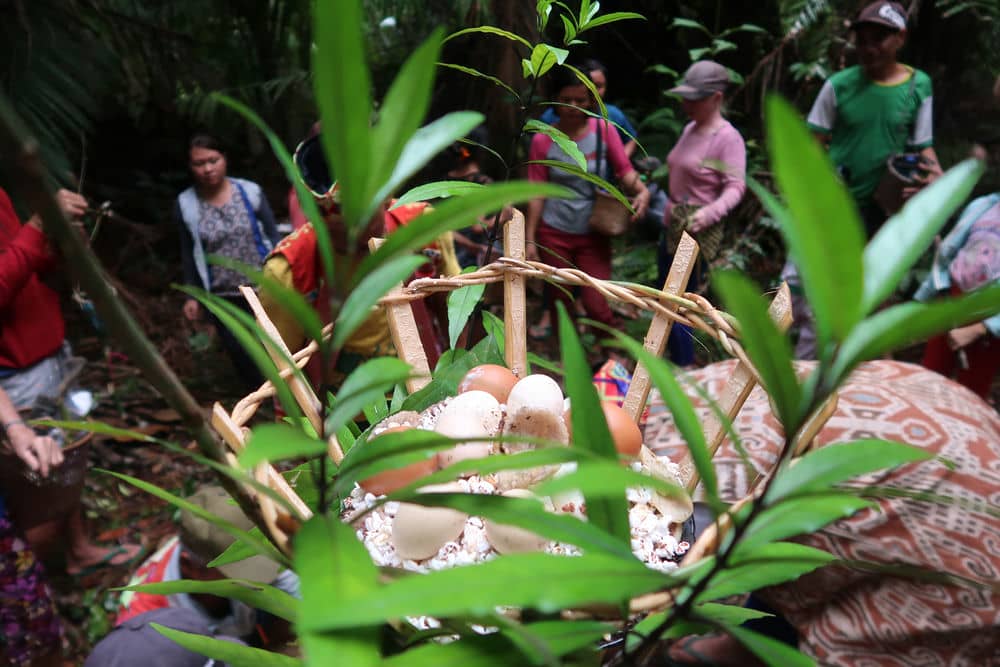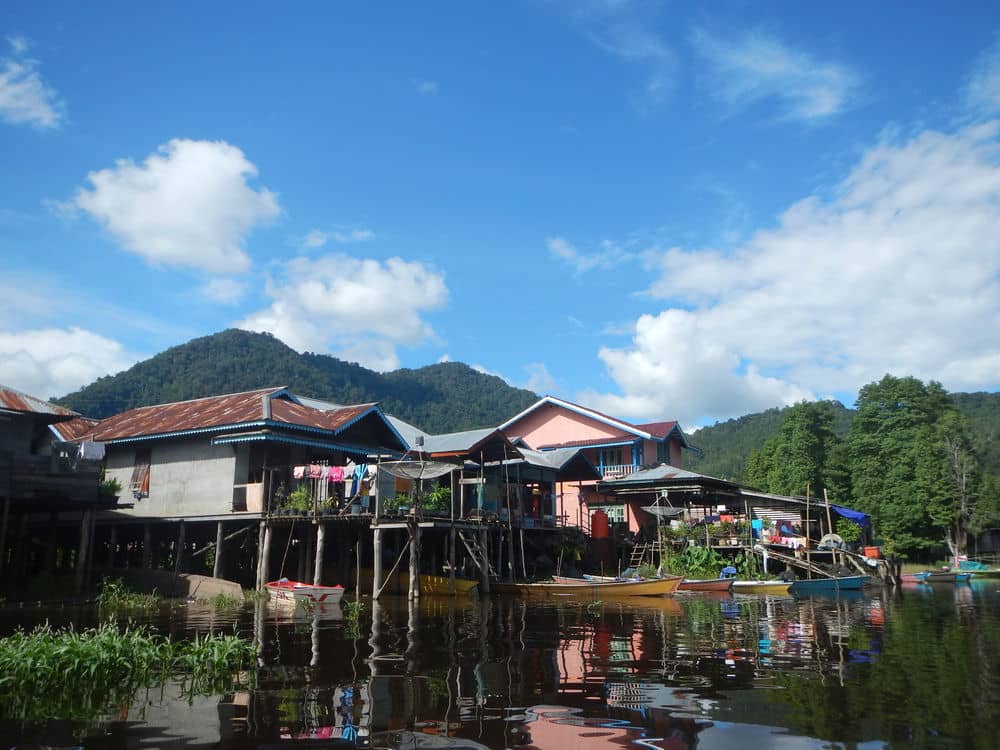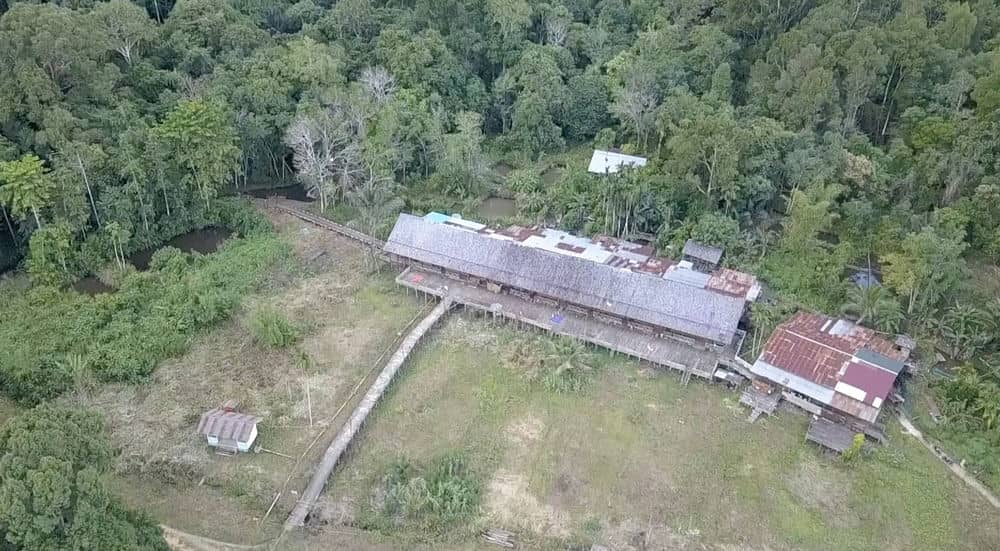Although located in a remote part of Borneo, the DSNP area has a long history of human settlement and exploitation. Up to about 200 years ago, the area was inhabited by various ethnic groups (later collectively known as 'Dayak'), who cultivated hill rice using swidden practices, and supplemented their diet largely by means of hunting and gathering forest produce. Fishing was also a very important part of the local economy, especially in the Kapuas lakes region.

These people had strong animist beliefs that were closely associated with the forests and their wildlife.
Islamic Malay culture spread from the Malacca Straits area, Sumatra and Malaya to the coastal parts of West Kalimantan at least 300-400 years ago, and by the late 18th century, it had spread up to the large towns along the Kapuas River, in the vicinity of what is now the Park. The Dayak were generally not displaced, but in the period 1800-1860 many were converted to Islam and assimilated into the Malay culture. The Malay language spoken nowadays in the Upper Kapuas region owes as much to local Dayak languages (e.g. Embaloh and the various Iban groups) as it does to more traditional coastal Malay.
Apart from language and religious practices, changes that occurred include the moving of villages from forested areas, where the Dayak traditionally inhabited longhouses, to single-family dwellings in villages located along rivers and lake shores. Compared to Malays along the Borneo coast and in Malaysia, however, the Malays in the DSNP area still maintain strong links with the forests, as they still harvest timber and minor forest products, and practice some form of shifting cultivation.
Currently, there are 39 villages located in or immediately adjacent to the Park, having a total of about 6,500 inhabitants, of which about 85 percent are Malay. The population density of the DSNP area is about five persons per square kilometer.
The DSNP area is largely inhabited by Malays, who inhabit 34 of the 39 villages located in or immediately adjacent to the Park. Their total population numbered about 4,000 in 1990 and is currently expected to be about 10,000. During the fishing season (usually June-August) this swells temporarily by about 20 percent, as relatives from the Kapuas River towns may join them for several months. About six of these villages are temporary fishing camps, but the majority are permanent, and several of the largest villages boast mosques, schools, primary health centers and police stations.

While some villages have been established during the last two decades, many have a much longer history, and some are several hundred years old. All Malay villages maintain strong ties with larger Malay towns located along the Kapuas River, and the sub-district boundaries follow the old Malay fiefdom boundaries established by the colonial administration in 1880.
During religious festivities or censuses, for example, Malay villages in the Park are largely deserted, as most inhabitants move back to their ancestral town along the Kapuas River to join relatives. In order to cope with the rise and fall of water levels, houses are generally built on poles or float on rafts of timber.
Dayak inhabiting the DSNP area belong to three ethnic groups: Iban, Embaloh and Kantu'. The Embaloh and Kantu' inhabit the areas east and west of the lakes, respectively, and the Iban mainly occupy the area to the north and northeast. The flat area to the north and northeast of the lakes is called the Emperan, and the Iban in this area call themselves the Emperan Iban.

Currently, there are about 1,200 Dayak in the area, inhabiting 5 of the 39 villages located in/adjacent DSNP. The majority of Dayak in the region live in the hills and higher ground that surrounds the Park, and their villages are located well outside DSNP. These people mainly depend on upland rice based on shifting cultivation, in combination with hunting and harvesting of forest products. Fruit trees are cultivated around in and around the communities, and rubber plantations may also be established, often at some distance from the village.
Forests within the utilization area of a given village may be veritable forest gardens, and following centuries of enrichment planting, certain patches of forest are particularly endowed with desirable species, such as tengkawang.
The Dayak agroforestry system practiced on the periphery of DSNP has resulted in a mosaic of habitats, consisting of shifting cultivation patches (often in various stages of regrowth) and patches of forest preserved for various purposes. The latter may be preserved for religious purposes, an abundance of honey trees, unfavorable soil conditions (e.g. many boulders), or an abundance of fruit trees.

Dayak villages vary from small longhouses, housing up to 5-8 families, to large longhouses (15-30 families) and market towns such as Lanjak, where families have individual houses. Iban Dayak has been engaged in migrant labor for a long time, and many young men spend several years working in nearby Sarawak, usually in the logging industry or on plantations. When there are few opportunities for cash income at home, adult males absence due to labor migration may be 50 percent or more in most longhouses. Villages have become quite dependent on the supplementary income provided by this migrant labor, not so much for subsistence, as for schooling and consumer goods.
